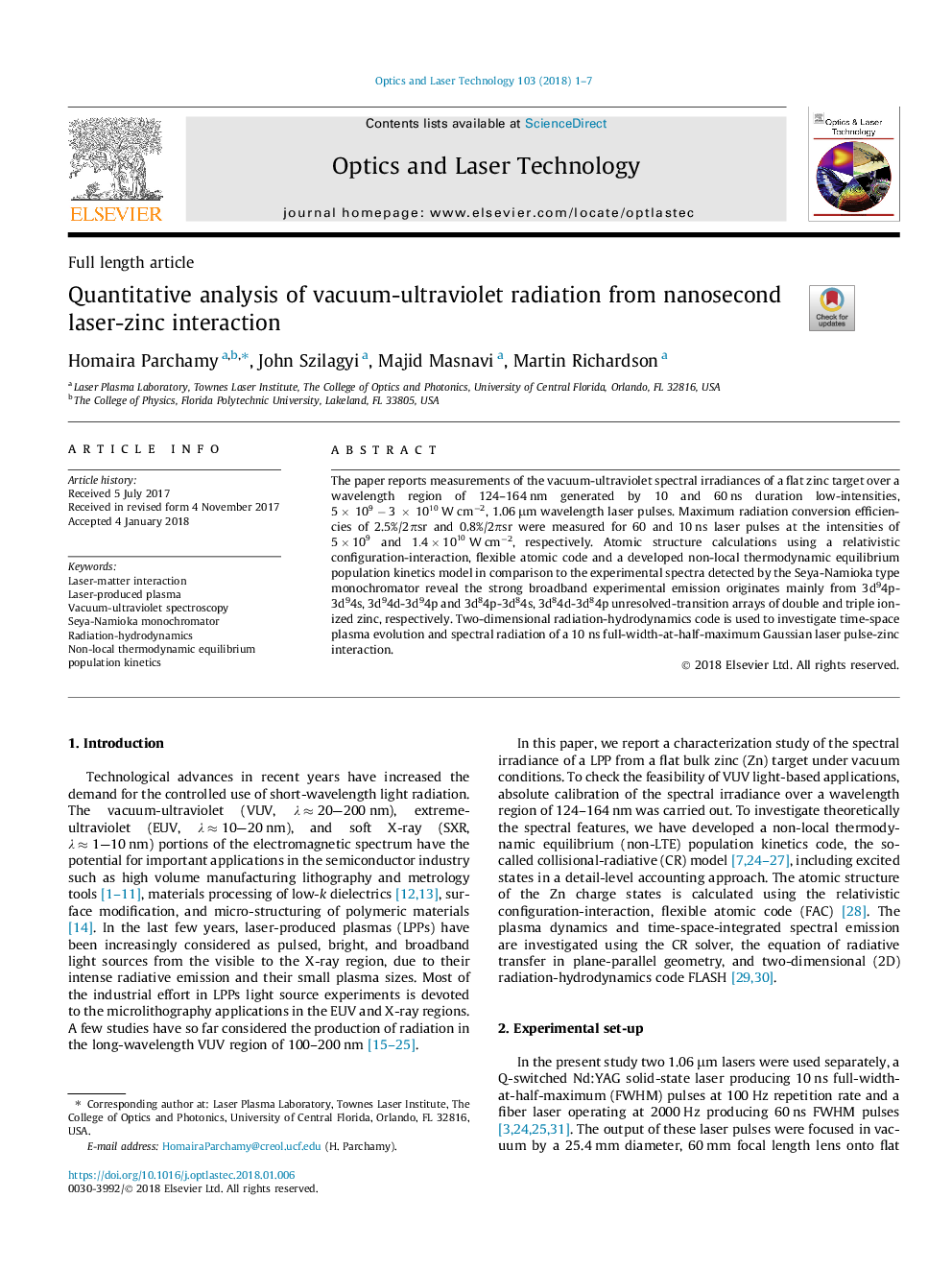| Article ID | Journal | Published Year | Pages | File Type |
|---|---|---|---|---|
| 7128850 | Optics & Laser Technology | 2018 | 7 Pages |
Abstract
The paper reports measurements of the vacuum-ultraviolet spectral irradiances of a flat zinc target over a wavelength region of 124-164â¯nm generated by 10 and 60â¯ns duration low-intensities, 5Ã109-3Ã1010â¯Wâ¯cmâ2, 1.06â¯Î¼m wavelength laser pulses. Maximum radiation conversion efficiencies of 2.5%/2Ïsr and 0.8%/2Ïsr were measured for 60 and 10â¯ns laser pulses at the intensities of 5Ã109 and 1.4Ã1010â¯Wâ¯cmâ2, respectively. Atomic structure calculations using a relativistic configuration-interaction, flexible atomic code and a developed non-local thermodynamic equilibrium population kinetics model in comparison to the experimental spectra detected by the Seya-Namioka type monochromator reveal the strong broadband experimental emission originates mainly from 3d94p-3d94s, 3d94d-3d94p and 3d84p-3d84s, 3d84d-3d84p unresolved-transition arrays of double and triple ionized zinc, respectively. Two-dimensional radiation-hydrodynamics code is used to investigate time-space plasma evolution and spectral radiation of a 10â¯ns full-width-at-half-maximum Gaussian laser pulse-zinc interaction.
Related Topics
Physical Sciences and Engineering
Engineering
Electrical and Electronic Engineering
Authors
Homaira Parchamy, John Szilagyi, Majid Masnavi, Martin Richardson,
